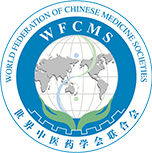Study on the mechanism and molecular docking verification of buyang huanwu decoction in treating diabetic foot
Release time: Aug 29,2023
Reading volume: 821
Objective: The objective of this study was to investigate the molecular mechanism of Buyang Huanwu decoction (BYHWD) in the treatment of diabetic foot (DF).
Methods: The TCMSP, BATMAN, PubChem, PharmMapper, UniProt, GeneCards, Webgestalt, and Kobas databases were used to obtain the structures, targets, main biological functions, and pathways of the active ingredients of BYHWD, and the results were visualized using Cytoscape3.6.1, Ledock, and PyMol software.
Results: A total of 82 active components of BYHWD and 193 targets related to BYHWD were identified, and 5295 genes related to DF were identified using the GeneCards database, including 65 key targets of BYHWD in the treatment of DF. GO and KEGG enrichment analyses of the 65 targets for BYHWD treatment of DF showed that 47 GO items were involved in the treatment. It was mainly involved in biological processes, such as biological regulation, metabolism, and stress response. It is primarily involved in protein binding, ion binding, nucleotide binding, and other molecular functions. It is mainly involved in membrane encapsulation, membrane lumen closure, and other biological components and involved in the VEGF, TNF, RAS, RAP1, PI3K-AKT, MAPK, and IL-17 signaling pathways. Most targets were enriched in the PI3K-AKT and MAPK signaling pathways. Molecular docking results showed that the 59 key active components of BYHWD had strong binding activity with 64 key DF targets.
Conclusion: The therapeutic effect of BYHWD on DF is based on the pharmacological effects of multiple targets and pathways.
[FULL TEXT]
Methods: The TCMSP, BATMAN, PubChem, PharmMapper, UniProt, GeneCards, Webgestalt, and Kobas databases were used to obtain the structures, targets, main biological functions, and pathways of the active ingredients of BYHWD, and the results were visualized using Cytoscape3.6.1, Ledock, and PyMol software.
Results: A total of 82 active components of BYHWD and 193 targets related to BYHWD were identified, and 5295 genes related to DF were identified using the GeneCards database, including 65 key targets of BYHWD in the treatment of DF. GO and KEGG enrichment analyses of the 65 targets for BYHWD treatment of DF showed that 47 GO items were involved in the treatment. It was mainly involved in biological processes, such as biological regulation, metabolism, and stress response. It is primarily involved in protein binding, ion binding, nucleotide binding, and other molecular functions. It is mainly involved in membrane encapsulation, membrane lumen closure, and other biological components and involved in the VEGF, TNF, RAS, RAP1, PI3K-AKT, MAPK, and IL-17 signaling pathways. Most targets were enriched in the PI3K-AKT and MAPK signaling pathways. Molecular docking results showed that the 59 key active components of BYHWD had strong binding activity with 64 key DF targets.
Conclusion: The therapeutic effect of BYHWD on DF is based on the pharmacological effects of multiple targets and pathways.
[FULL TEXT]

